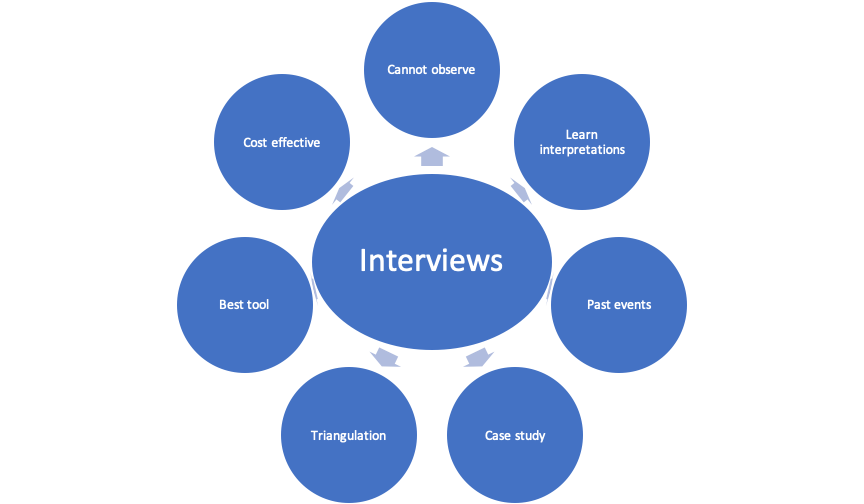Greetings! I am Beverly Peters, an assistant professor of Measurement and Evaluation at American University. I have over 25 years of experience teaching, researching, and evaluating community development and governance projects, mainly in southern Africa. I have spent the bulk of my career using qualitative methods to evaluate projects; and write a blog for American University on Qualitative Research Methods for Monitoring and Evaluation.
In this 5-part series, I will discuss Using Interviews for Monitoring and Evaluation. The series will walk the evaluator through the use of interviews, from deciding which kind of interview might be the right tool to use for your data collection needs, to conceptualizing, planning, and conducting interviews, to analyzing interview data. Let’s get started!
Patton (2015) tells us that interviews dominate qualitative data collection for monitoring and evaluation. Evaluators use interviews for needs assessments, project planning, and monitoring and evaluation activities. Indeed, we probably use individual interviews more than any other single method in our qualitative data collection toolbox.
The challenge for me as an evaluation methodologist is that there seems to be a perception that carrying out interviews is relatively easy. The common perception is that anyone with a pen, paper, and questions can carry out an interview, and do it well. Perhaps this perception is one of the reasons that interviews are our go-to method for qualitative data collection.
The reality is that the use of spontaneous interviewing may be convenient for our evaluation design, time restrictions, and budget, but it also greatly hinders the quality of the data that we collect. This series takes a step back and asks when we should use interviews, how we can use interviews most effectively for our data collection purposes, and what skills we need to conduct good interviews.
Let’s tackle when we should use interviews in this first post. Interviews help us to collect individual perceptions that are very insightful for our monitoring and evaluation activities. Merriam and Tisdell (2015) tell us that we use qualitative interviews when we cannot observe behavior, when we want to see how people interpret the world around them, and when we are interested in past events. Tracy adds that we use interview data for case studies or for data triangulation. That is, to strengthen data collected with other methods, or to seek clarification on unexpected findings.
To put it most simply, we use interviews when they are a better or a more cost effective data collection tool than using other methods in our qualitative methods toolbox. However, using interviews effectively is actually harder than we might think, as the articles in this series will show us.
Why Use Interviews for Monitoring and Evaluation?

Rad Resources:
- Patton, M.Q. (2015). Qualitative Research and Evaluation Methods, 4th ed., Thousand Oaks: SAGE.
- Merriam, S. and Tisdell, E. (2015) Qualitative Research: A Guide to Design and Implementation. San Francisco: Wiley.
Do you have questions, concerns, kudos, or content to extend this aea365 contribution? Please add them in the comments section for this post on the aea365 webpage so that we may enrich our community of practice. Would you like to submit an aea365 Tip? Please send a note of interest to aea365@eval.org. aea365 is sponsored by the American Evaluation Association and provides a Tip-a-Day by and for evaluators.

I was looking forward to the other articles in this series on interviews, but they weren’t posted last week.
They’ll be coming soon! They will be published over time, rather than in a single week.
Good insights into the interview tool in data collection. I’m a data collector I cab attest to this. Thanks.